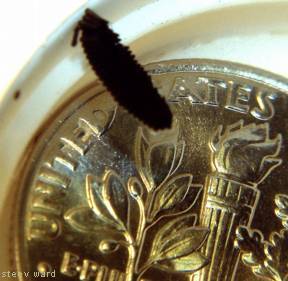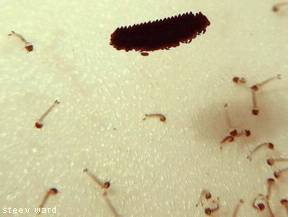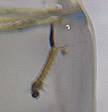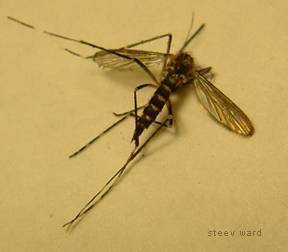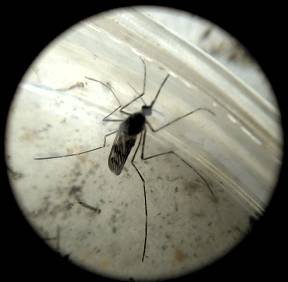
Stages in the life cycle of some mosquitos from the Seattle, WA area.
There are several genera of mosquitos, and in the United States there are about 160 species. The mosquitos shown here are probably of the genus Culex, but I am uncertain of that.
These pictures are typical of mosquitos but do not represent all species. In addition there are many aquatic insects which are NOT mosquitos but which appear somewhat similar.
